This article was originally featured in the February 2024 issue of Connect.
Martina Comorkova (Okinawa)
The neon lights of Dotonbori street, illuminating one-of-a-kind street food creations, screaming at your senses to “try me.” The sizzling sound of still-cooking takoyaki, beckoning you to the tasty local specialty like a siren’s call. A towering behemoth of a castle surrounded by a beautiful garden, protected on all sides by a moat. These are a few things that might come to mind when one thinks of Osaka, but there is one location just as deserving as the rest that is spared no thought. Shinsekai (新世界 literally, “new world”) was built shortly after the turn of the 20th century as a showcase of Japan’s successful industrial revolution and its new status as an emerging global superpower.
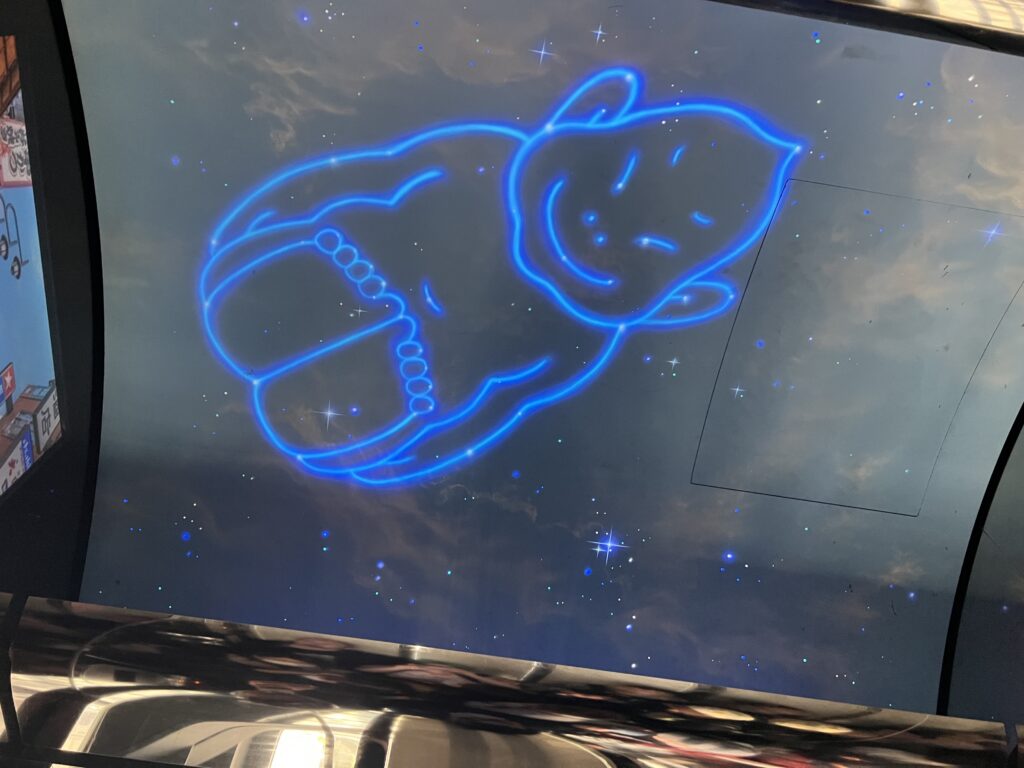

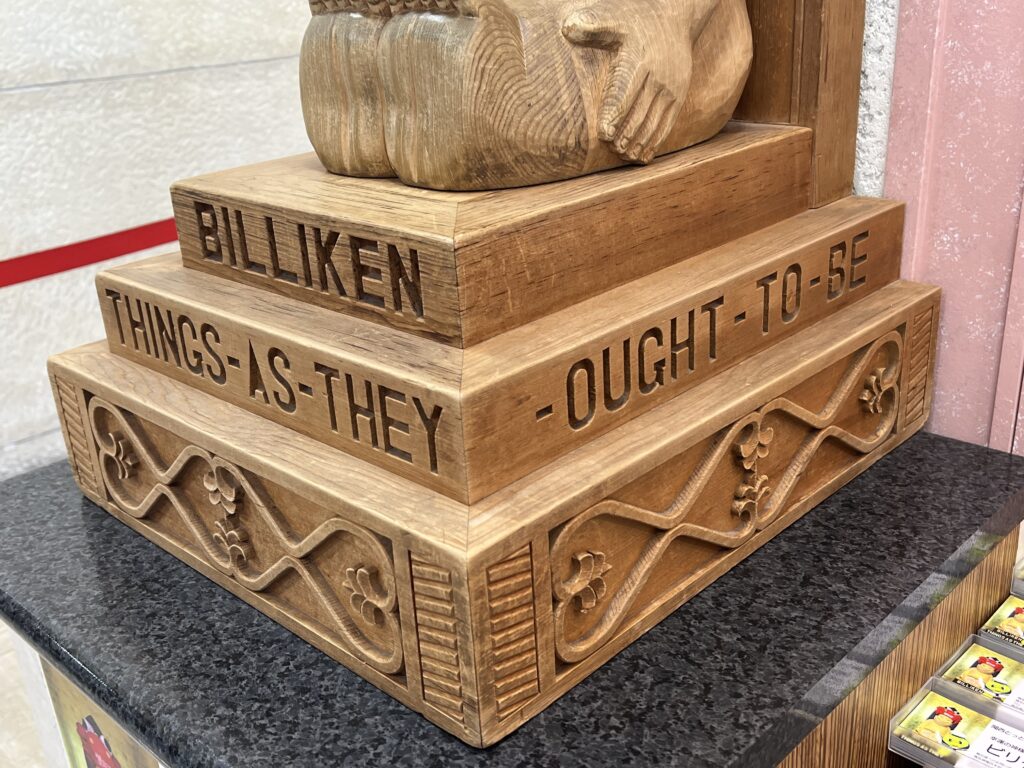
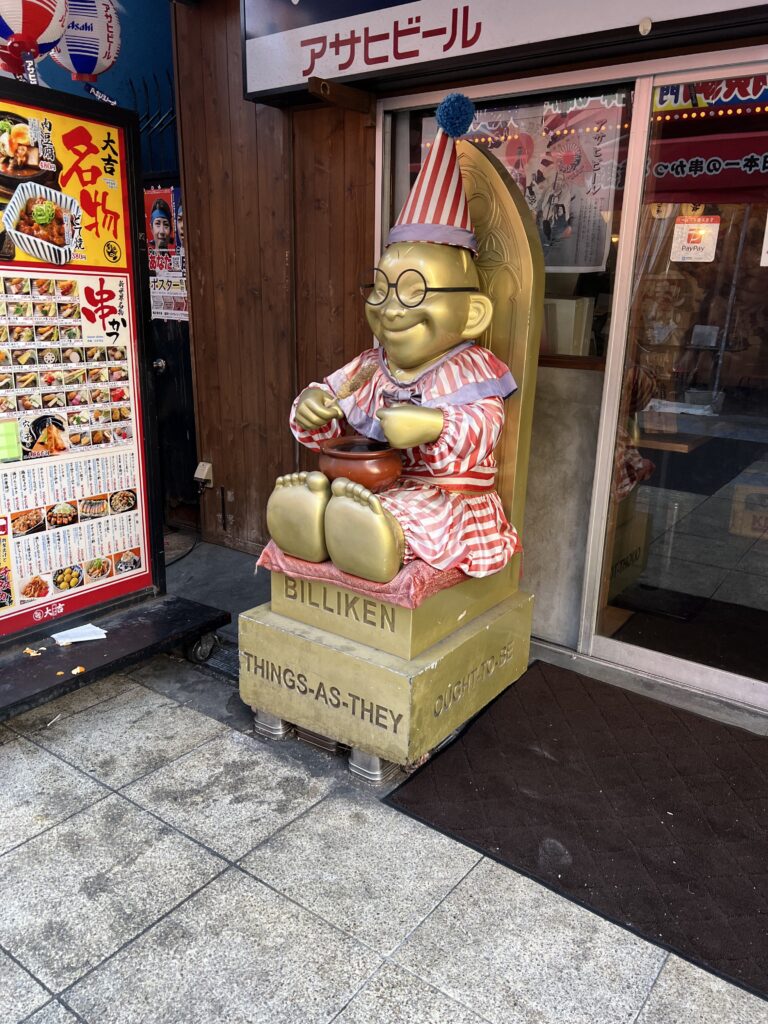
The southern half of Shinsekai was modeled after Coney Island in New York, while the northern half was modeled after Paris, although I didn’t see the resemblance when I visited. The center piece to all of this was the Tsutenkaku Tower, originally designed to resemble the Eiffel Tower, if it was built on top of the Arc de Triomphe. In the days of yore, Shinsekai truly was a new world. A cable car ran overhead, which connected the tower with the nearby Luna Park. Shortly after Shinsekai’s construction in 1912, Tennoji Zoo was built in 1915. Although many things faded away with the passage of time, the zoo remains to this day.
Shinsekai feels like a bizzaro alteration of history that would feel more at home in an episode of the Twilight Zone as opposed to the physical reality we embody. The tower I saw, rebuilt since its construction, doesn’t resemble the above description in the slightest. All traces of the Arc de Triomphe were twice stripped away—once by a fire that damaged the tower in 1943, and again when it was disassembled shortly after for scrap metal, the resources repurposed for the then-raging war. The faux Eiffel Tower now has more in common with an alien spaceship. The new octagonal structure with the letters “HITACHI” blazing down the side showcases the proud sponsors of this creation. Everything about it looks fake, but in a way that’s so unabashedly authentic. With all the subtlety of a circus sideshow, there’s something undeniably endearing about this strange place.
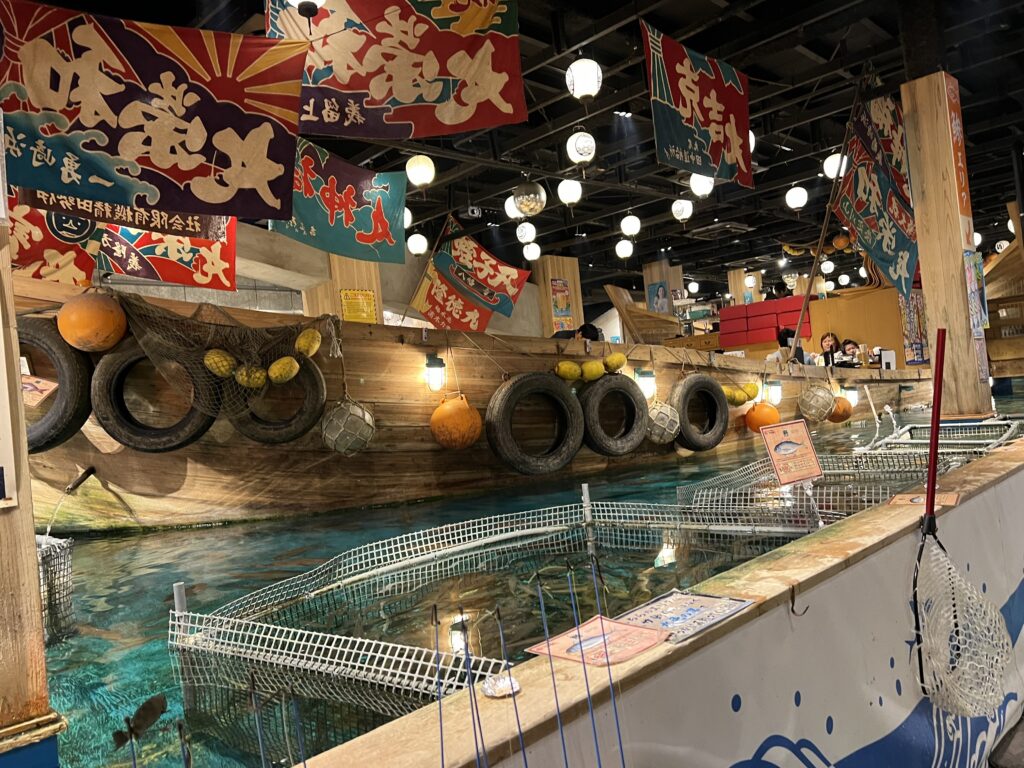
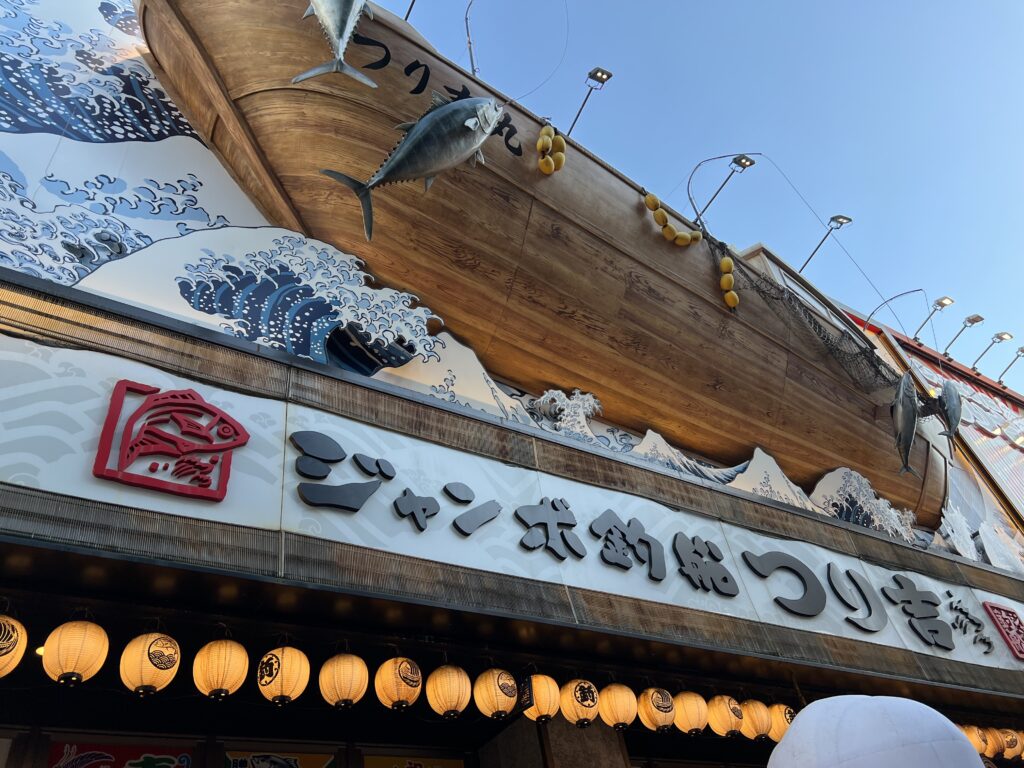

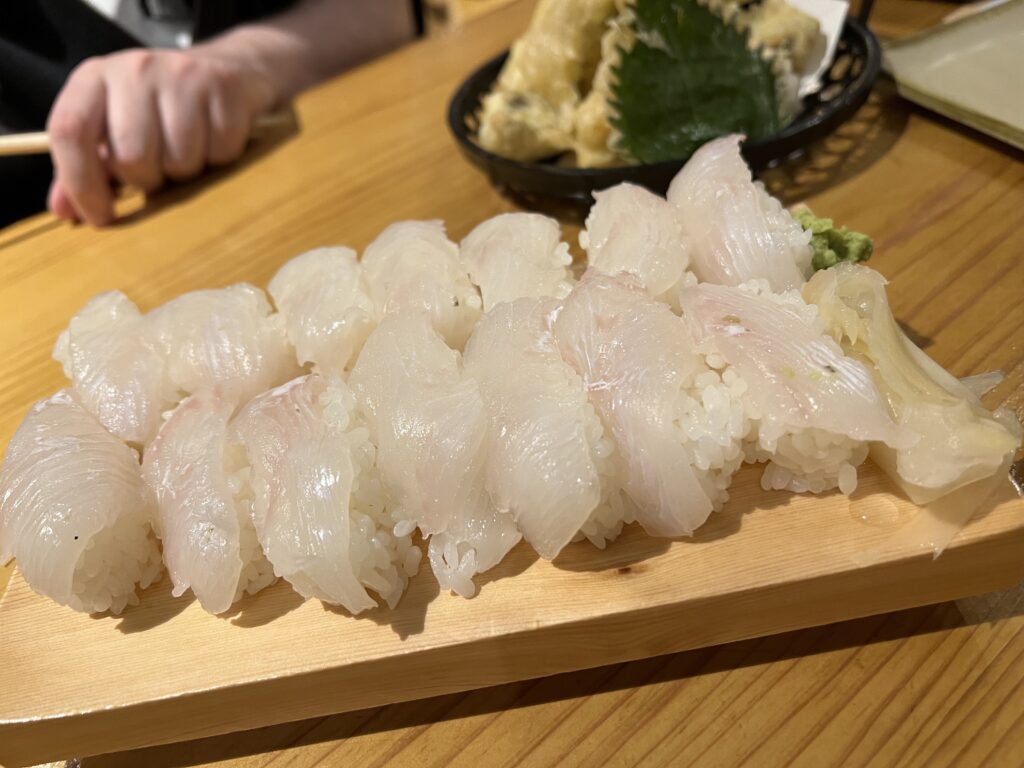
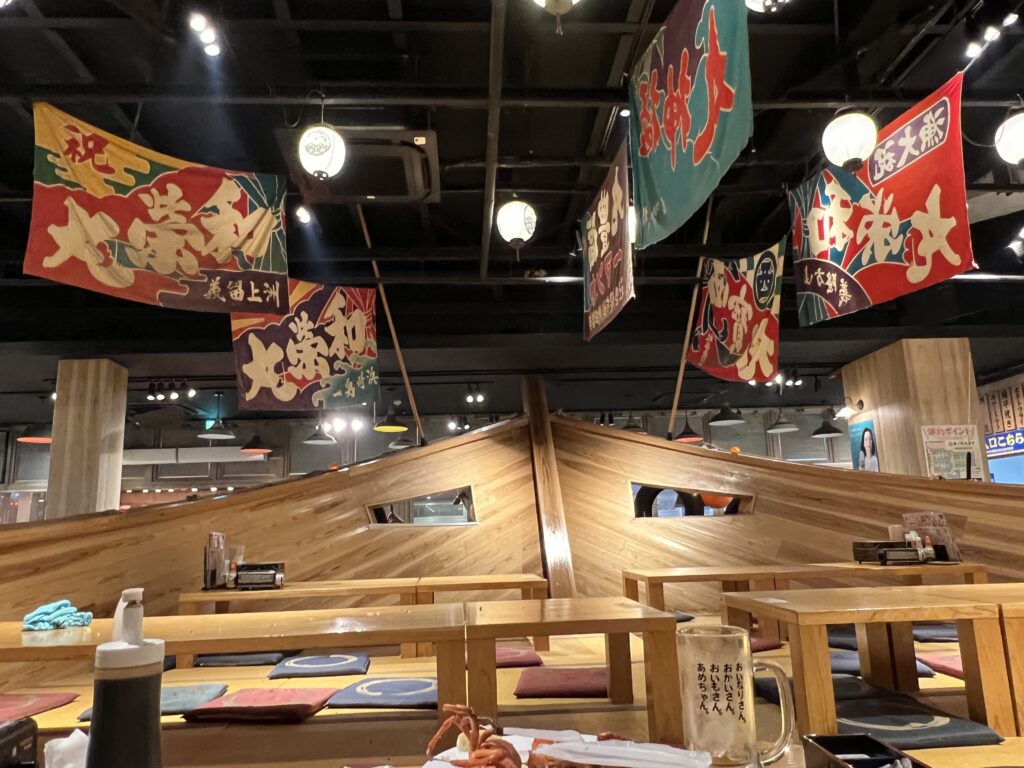
When you visit Shinsekai, you are greeted by a sign that reads “Sin-Sekai” in stylized neon letters—a relic from times before there was a standard romanization style for Japanese characters. You don’t need to walk far to be right under the Tsutenkaku Tower, and you can look up and see the intricate mural painted underneath, depicting peacocks and a variety of flowers. Shinsekai was smaller than I expected, and makes for a perfect half-day trip for any Osaka-bound travelers—a trip I say is very much worth it.
I’ve always considered myself a foodie, and so I felt it was my duty to visit Daruma, the original store where kushi-katsu was invented. Kushi-katsu is a convenience food you can find all over Japan. Seemingly, anything can be transformed into this humble dish, as long as it’s fried and on a stick. More on that one later. The very first kushi-katsu store was opened in Shinsekai by a woman named Momono Yoshie, a restaurant owner who made her money by selling the newly invented speciality to blue-collar workers hoping to fill up for a cheap price. For dessert, I stopped by a sweets and ice cream shop. I ordered a chiffon cake that was well beyond Instagram worthy and would feel right at home on any high flying influencer’s social media feed.


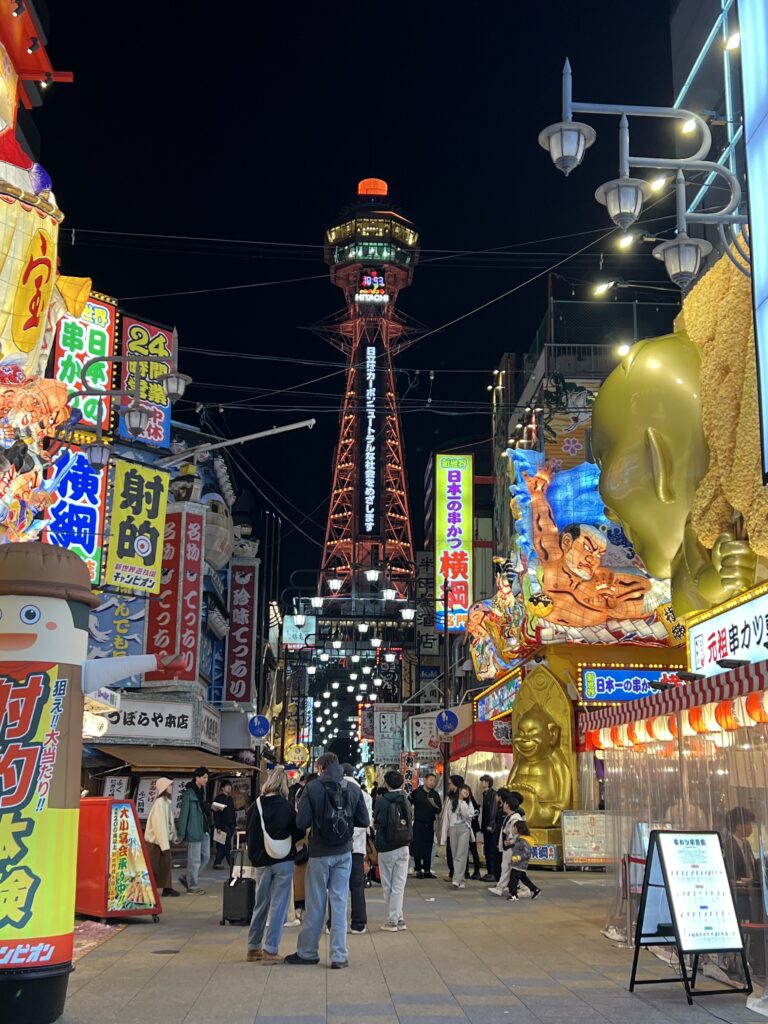
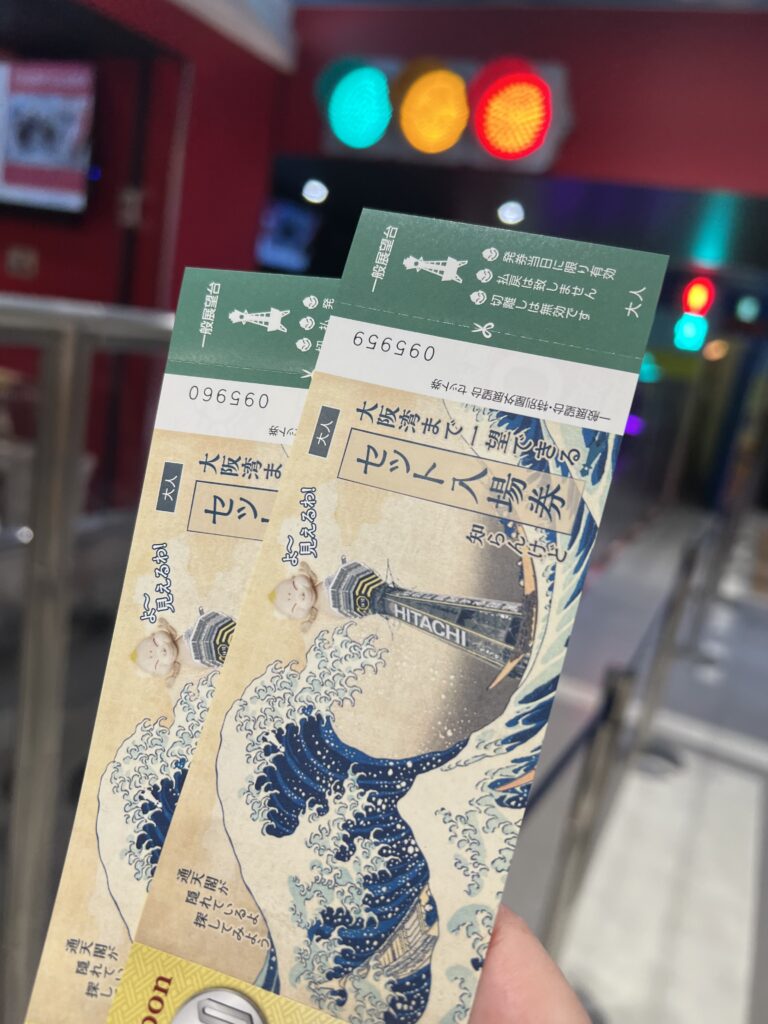
Something I couldn’t help but notice was a little figure that could be found all over the place. Shinsekai has a mascot of its own, with a quite unusual origin. Billiken has pointed ears, with his big feet stuck out so his soles face the viewer. There are a few things you should know about him. He’s said to bring good luck, and is the god of “things as they ought to be.” His presence is unavoidable around Shinsekai, which is remarkable because you’ll almost never see him anywhere else in Japan. Lastly, he was designed by an art teacher from Kansas City, Missouri in 1908 and is the athletic mascot of The University of Saint Louis, on top of being an enshrined god in Japan.
Next, I chose to head up Tsutenkaku during the day to get a good view of the surrounding Osaka cityscape. As beautiful as I’m sure the skyline would be lit up at night, I was worried the sparkling lights would drown out the possible cityscape and make it difficult for me to see how far the view reaches from atop the tower. On the elevator up, a short video is played about Shinsekai, and the room goes dark. A lit-up illustration of Billiken comes to life on the ceiling, reminding visitors under whose good grace it is that Shinsekai prospers. The route down from the observation deck takes you through a museum dedicated to Shinsekai’s history, and it becomes very apparent that the one thing keeping Shinsekai running is pure, unadulterated capitalism; signs for Glico, Pringles, and Kinnikuman are plastered over every exhibit, almost like a wall of advertising you have to click through to read the historical information, but they feel right at home next to the shrine of Billiken (where I made sure to pay my respects). The products of the tower’s inescapable sponsors also fill the gift shop you walk through on your way to the exit, leaving no room for the tasteful selection of local rice crackers and cookies that usually feature in Japanese souvenir shops. This place is a mess and I love it.
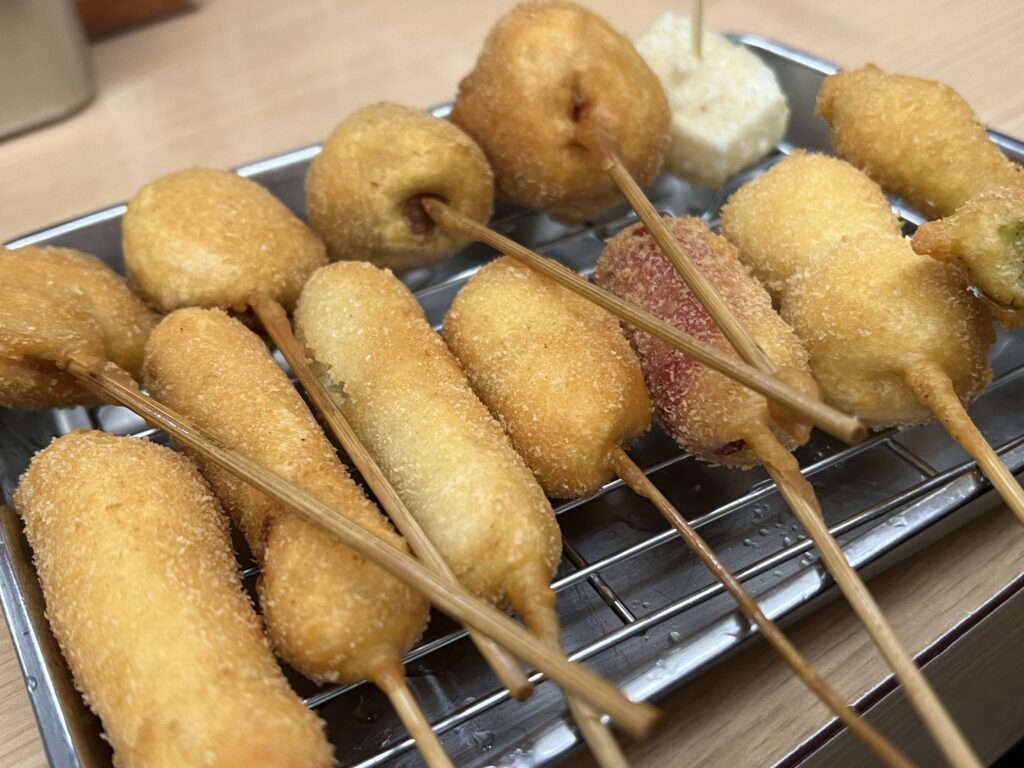
I spent the rest of my afternoon walking around and soaking in the sights. One thing you’ll quickly notice is just how weird Shinsekai is. There was an unmanned “store” that had adult-only gachapon capsule machines on one wall and a small crane game where you could only win plastic crab claws on the other. In the far back was a Punch-Out!! arcade machine. It’s a mystery how this store pays its rent, and not one I’m willing to solve. Oh yeah, and about the kushi-katsu. . . when I said kushi-katsu only needs to be fried and on a stick, I meant it. While many of the kushi-katsu restaurants were fairly ordinary, not all of them were. A sign for lizard, scorpion, and grub kushi-katsu stood next to plastic mock ups of the more typical fare, as well as a bounty requesting large reptiles.

The not-so-weird parts of Shinsekai feel frozen in time. As a resident of Japan, it’s the only place I’ve encountered, outside of a festival, where people could have fun shooting with a cork gun, or even a bow and arrow. Gachapon machines are littered all throughout Shinsekai, and it’s recommended that visitors keep their eyes peeled; it’s not uncommon to encounter something that is entirely out of production, having fallen out of fashion everywhere else.
One Shinsekai highlight that feels truly one of a kind are its retro arcades. Their oldest cabinets proudly state their age. There’s something special about getting to play Pac-Man on a cabinet labeled “1983”—old enough that it has been around since the very beginning, when history was being made. Tragically, or perhaps obviously, I was unable to take any meaningful pictures of these wonderful machines; CRT screens are impossible for my camera to capture properly.
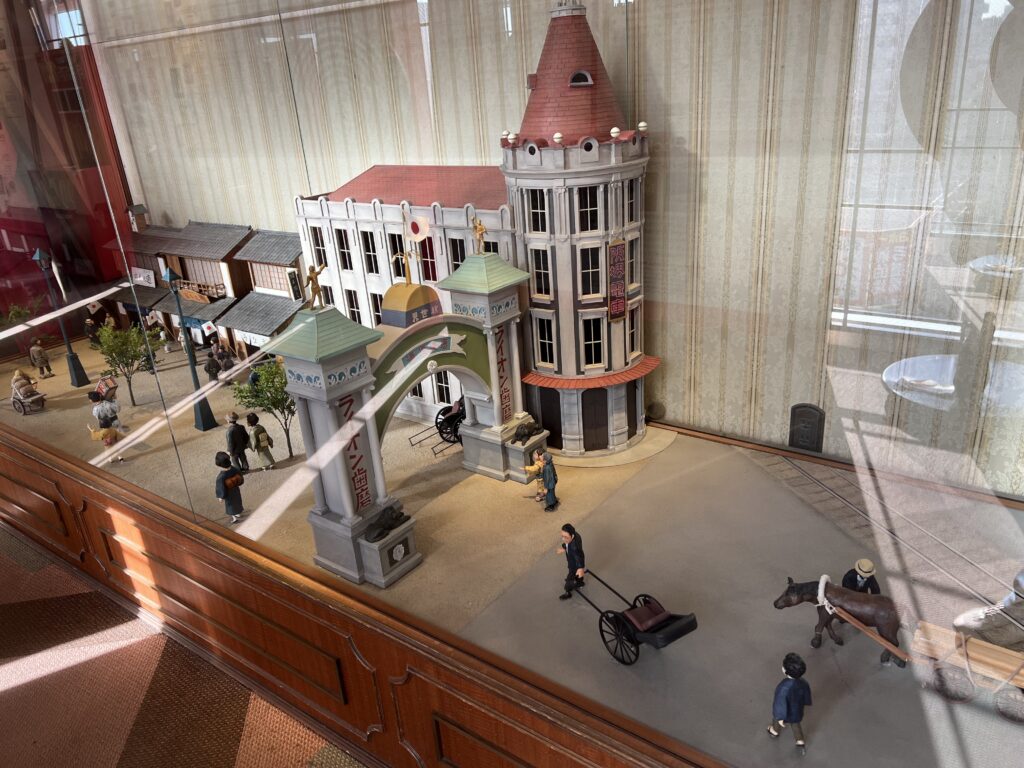
The sun had set at this point, and the city lights were springing to life. Earlier that day, shortly after lunch, I passed by something unmissable: a restaurant with a too-large-to-capture-in-one-photograph boat decorating the outside. Upon looking through the window, I saw a faux boat inside as well. It was a seating area for customers, surrounded on almost all sides by tanks filled with fish and labeled with menu items and prices, with guests allowed to catch their own fish for dinner. The restaurant provides customers with the necessary tools required for the endeavor. It was a bit nerve wracking for me; I’ve only ever gone fishing a couple of times as a young child, so this effectively felt like my first time. I was absolutely over the moon when I caught a flounder of my own.
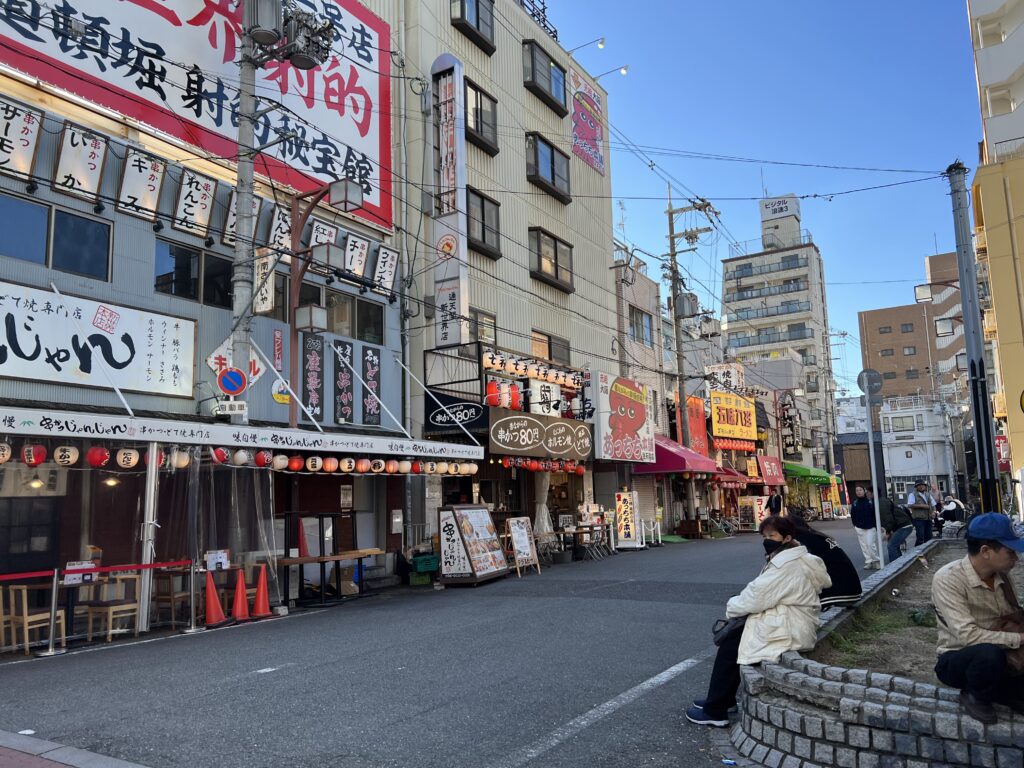

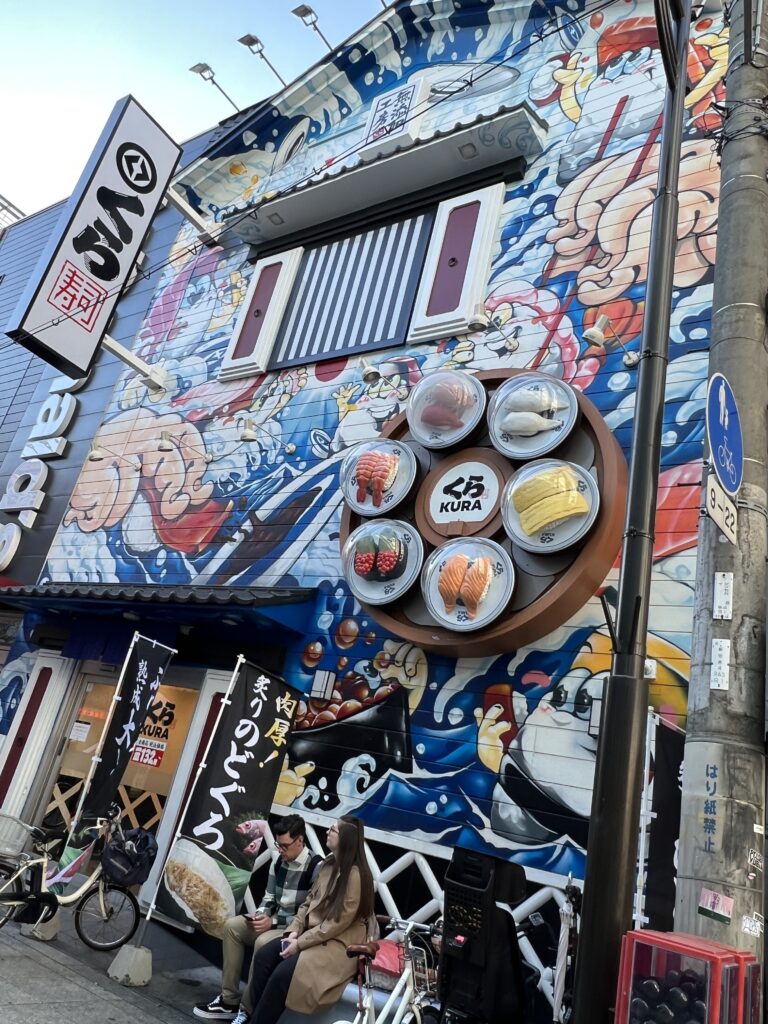
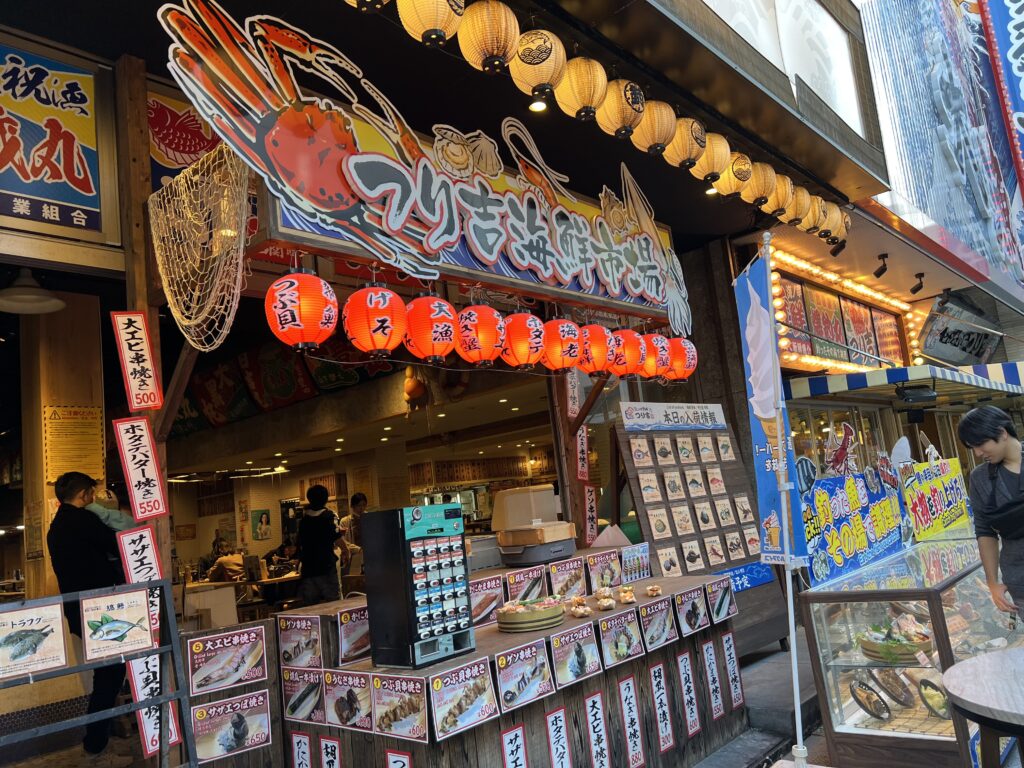

That was when it dawned on me that I just sentenced the little still-flopping guy to his end. It was a blink-and-you’ll-miss-it sort of internal crisis. I almost threw in the towel there, and reconsidered becoming a vegetarian. The thing that kept my head in the game was the fact that I was a carnivore and always have been. It felt wrong to back out now—hypocritical even—when this is essentially what I was doing every day but with extra steps. So please, as a customer, keep in mind that while you will certainly have no problem enjoying the couldn’t-possibly-be-fresher fish, be sure you can stomach the delicious burden that comes with catching your own dinner.

Full, fulfilled, and freshly enlightened, I headed back towards my hotel. All in all, Shinsekai is a once-long-forgotten place whose community didn’t let it die. Now, it’s filled with things you truly can’t find anywhere else. But it isn’t a place you can accidentally stumble upon on most Osaka itineraries; it might take some deliberate planning to get yourself here. I had the good fortune of coincidentally choosing a hotel a stone’s throw away, giving me the opportunity to pass through Shinsekai a small handful of times. No matter how often I passed through, I found something new, but could no longer find something I had sighted the previous times. Shinsekai was initially built because of the pioneers of the industrial revolution, and was kept on life support by the bold people who believed in it once that chapter had run its course. It’s the kind of place to reward explorers who are willing to take a trip and see it for what it is—a tempest of past, present, and future. I recommend it for anyone brave, and willing to ride the storm.
Martina Comorkova is a second-year ALT in Okinawa and a huge fan of games. When she isn’t in the middle of a game, she’s absorbed in books, honing her craft as an aspiring writer.



![CONNECT ART ISSUE 2024 SUBMISSIONS [CLOSED]](https://connect.ajet.net/wp-content/uploads/2024/04/ARTISSUE-INSTA-600x500.png)





